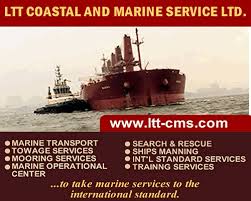The 8,100 dwt NACC Alicudi has become the world’s first cement carrier equipped with IMO Tier III compliant diesel engines driving bulk handling system, Van Aalst Marine & Offshore said.
Converted in 2017 with a Van Aalst dry bulk handling system, the vessel became a 120m self-discharging cement carrier.
As explained, the Van Aalst cement handling system is based on compressors and vacuum pumps, driven by Tier III Scania engines. Together, they form the heart of the vacuum-pressure system for pneumatic conveyance of cement, fly ash and granulated slag.
The development of the world’s first Scania IMO tier III diesel engines in service has been the result of joint engineering of Van Aalst, based in the Netherlands, and Scania from Sweden. The challenge put forward was to find correct placing of the Scania Selective Catalytic Reduction (SCR) system in the engine room deckhouse, which was smaller as the previous non-SCR equipped engine room deckhouse. This resulted into lowering emissions, but also, and very important for the cement carrier owner, the lowering of the height of the loading system and loading points on board the vessel. This has considerable advantages during the ship’s operational life, as it can serve an increased number of ports.
Directly after completion of the conversion, the NACC Alicudi entered the trade for a three-year contract on the east coast of the United States of America and Canada. This area has been declared a NOx Emission Control Area (ECA) for new built and converted vessels as from January 2016, and the NACC Alicudi is now compliant with the area emission rules.
The new rules under IMO Tier III (NOx Emission Control Areas) envisage a 70% reduction in nitrogen oxide as well as sulphur oxide emissions from diesel engines, considerably more stringent than the EPA 2010 (USA) and EURO 6 (Europe) legislation.
Owned by NovaAlgoma Cement Carriers, the ship is chartered to McInnis Cement, to whom belongs a new cement plant in Port-Daniel-Gascons, Quebec, and a new receiving Bronx terminal in New York. As such, the newly-converted NACC Alicudi is an addition to the overall logistic footprint of McInnis, which already consists of another NovaAlgoma vessel, the NACC Quebec.
NovaAlgoma Cement Carriers said the vessel is a major step forward in emission reduction as well as operational flexibility. In addition, the McInnis cement company expressed its appreciation of the delivered performance of the bulk handling system which is performing above contractual discharge rates. This enables McInnis Cement to reduce the turn-around time and increase the annual throughput of the vessel.
The high emission standards of the vessel will enable a shift to the NOx and SOx ECA’s of the US Gulf of Mexico, and even Puerto Rico and Hawaii, in future.
In the meantime, Finland-based energy company Gasum has become a sole shareholder of Norwegian LNG provider Skangas.
The company has increased its shareholding in Skangas from 70% to 100% by purchasing shares from the Lyse Group.
As explained, the acquisition strengthens a key element of Gasum’s strategy and will further enhance the development of the Nordic gas market and LNG distribution network.
“Completing the acquisition of Skangas gives us even better opportunities to build and develop the Nordic gas ecosystem and to respond to growing demand. We thank the Lyse Group for the good co-operation in developing the LNG market,” Johanna Lamminen, CEO of Gasum, commented.
“The need for cleaner fuel solutions in industry and transport is increasing significantly, and LNG is the most competitive option for low-emission fuels. We want to be the frontrunner in taking the Nordic countries to a cleaner tomorrow,” Lamminen added.
In 2014, Gasum became Skangas’s majority shareholder with a 51% holding, and in 2017 the share grew to 70%.
Gas plays a major role in reducing the carbon footprint in terms of the total use of energy in the Nordic countries. The demand for cleaner fuel solutions is increasing rapidly as new ways to reduce emissions and fight climate change are sought in all transport and industry sectors. LNG can be used in both maritime and heavy-duty road transport, as well as in industrial processes. Renewable liquefied biogas (LBG) can be used in the same applications.
For the last few years, Gasum has been determined to build the Nordic LNG infrastructure to improve the availability of gas for the needs of the industry, transport, and maritime sectors. In September, Gasum announced the company’s intention to expand the Nordic LNG filling station network to around 50 locations by the early 2020s. An extensive filling station network in Finland, Sweden and Norway enables significant increases in the use of liquefied natural gas and liquefied biogas in road haulage and distribution traffic, according to the company.
World Maritime News


















